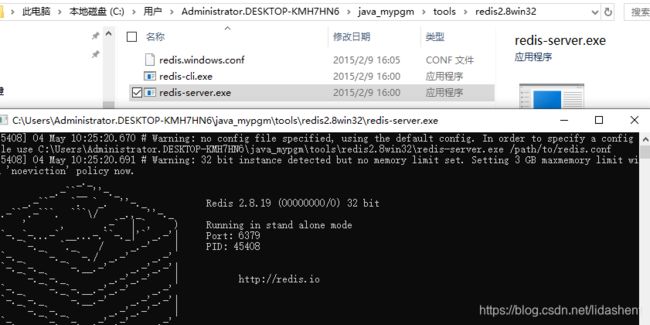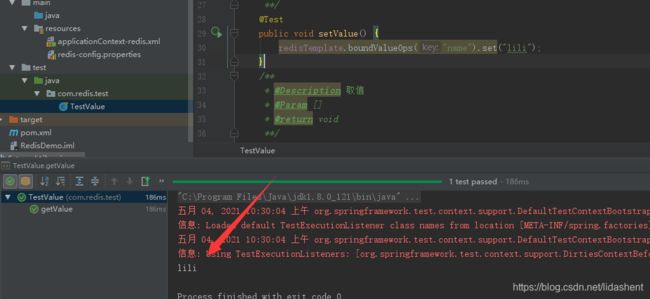javaweb-青橙项目-10-85
文章目录
- 第2章 缓存解决方案
-
- 学习目标
- 1. SpringDataRedis
-
- 1.1 SpringDataRedis简介
- 1.2 SpringDataRedis快速入门
-
- 1.2.1 准备工作
- 1.2.2 值类型操作
- 1.2.3 Set类型操作
- 1.2.4 List类型操作
- 1.2.5 Hash类型操作
- 1.2.6 ZSet类型操作
- 1.2.7 过期时间设置
- 2. 缓存穿透、缓存击穿、缓存雪崩
-
- 2.1 缓存穿透
- 2.2 缓存击穿
- 2.3 缓存雪崩
- 3. 商品分类导航缓存
-
- 3.1 需求分析
- 3.2 实现思路
- 3.3 代码实现
-
- 3.3.1 通用模块整合spring data redis
- 3.3.2 商品分类加载到缓存
- 3.3.3 查询商品分类缓存
- 3.3.4 更新商品分类缓存
- 4. 广告轮播图缓存
-
- 4.1 需求分析
- 4.2 实现思路
- 4.3 代码实现
-
- 4.3.1 广告数据加载到缓存
- 4.3.2 查询广告缓存
- 4.3.3 更新广告缓存
- 5. 商品详细页价格缓存
-
- 5.1 需求分析
- 5.2 实现思路
- 5.3 代码实现
-
- 5.3.1 价格数据加载到缓存
- 5.3.2 查询价格缓存
- 5.3.3 更新价格缓存
- 5.3.4 删除价格缓存
第2章 缓存解决方案
学习目标
掌握SpringDataRedis 的常用操作
能够理解并说出什么是缓存穿透、缓存击穿、缓存雪崩,以及对应的解决方案
使用缓存预热的方式实现商品分类导航缓存
使用缓存预热的方式实现广告轮播图缓存
使用缓存预热的方式实现商品价格缓存
项目序列-10:https://github.com/Jonekaka/javaweb-qingcheng-10-85
1. SpringDataRedis
1.1 SpringDataRedis简介
SpringDataRedis 属于Spring Data 家族一员,用于对redis的操作进行封装的框架
Spring Data ----- Spring 的一个子项目。Spring 官方提供一套数据层综合解决方案,用
于简化数据库访问,支持NoSQL和关系数据库存储。包括Spring Data JPA 、Spring
Data Redis 、SpringDataSolr 、SpringDataElasticsearch 、Spring DataMongodb 等
框架。
1.2 SpringDataRedis快速入门
1.2.1 准备工作
(1)构建Maven工程 SpringDataRedisDemo 引入Spring相关依赖、JUnit依赖、Jedis
和SpringDataRedis依赖
<!‐‐缓存‐‐>
<dependencies>
<!--spring-data-redis底层需要依赖jedis-->
<dependency>
<groupId>redis.clients</groupId>
<artifactId>jedis</artifactId>
<version>2.9.0</version>
</dependency>
<dependency>
<groupId>org.springframework.data</groupId>
<artifactId>spring-data-redis</artifactId>
<version>2.0.5.RELEASE</version>
</dependency>
<!--单元测试-->
<dependency>
<groupId>junit</groupId>
<artifactId>junit</artifactId>
<version>4.12</version>
</dependency>
<!--spring和junit整合的依赖-->
<dependency>
<groupId>org.springframework</groupId>
<artifactId>spring-test</artifactId>
<version>5.0.5.RELEASE</version>
</dependency>
</dependencies>
(2)在src/main/resources下创建properties文件夹,建立redis-config.properties
redis主机配置,端口,密码,数据库,连接数,最大等待时长
redis.host=127.0.0.1
redis.port=6379
redis.pass=
redis.database=0
redis.maxIdle=300
redis.maxWait=3000
maxIdle :最大空闲数
maxWaitMillis: 连接时的最大等待毫秒数
(3)在src/main/resources下创建spring文件夹,创建applicationContext-redis.xml
对redis进行配置
<?xml version="1.0" encoding="UTF-8"?>
<beans xmlns="http://www.springframework.org/schema/beans"
xmlns:context="http://www.springframework.org/schema/context"
xmlns:xsi="http://www.w3.org/2001/XMLSchema-instance" xmlns:p="http://www.springframework.org/schema/p"
xsi:schemaLocation="http://www.springframework.org/schema/beans http://www.springframework.org/schema/beans/spring-beans.xsd
http://www.springframework.org/schema/context http://www.springframework.org/schema/context/spring-context.xsd">
<!--读取路径下redis的属性文件-->
<context:property-placeholder location="classpath:redis-config.properties" />
<!-- redis 相关配置 -->
<!--从属性文件中提取属性进行配置,配置连接池-->
<bean id="poolConfig" class="redis.clients.jedis.JedisPoolConfig">
<property name="maxIdle" value="${redis.maxIdle}" />
<property name="maxWaitMillis" value="${redis.maxWait}" />
</bean>
<!--redis连接工厂-->
<bean id="jedisConnectionFactory" class="org.springframework.data.redis.connection.jedis.JedisConnectionFactory"
p:host-name="${redis.host}" p:port="${redis.port}" p:password="${redis.pass}" p:pool-config-ref="poolConfig"/>
<!--redis最为核心的类,对redis的存取值都需要此redisTemplate,相当于这就是redis的操作对象了,当需要redis的时候就根据需要注入,调用了redis工厂,层层向上封装-->
<bean id="redisTemplate" class="org.springframework.data.redis.core.RedisTemplate">
<property name="connectionFactory" ref="jedisConnectionFactory" />
</bean>
</beans>
接下来演示redis如何增删改查数据
1.2.2 值类型操作
运行redis服务器,windows上也能运行
一个服务器,一个客户端,客户端可以连接其他机器进行操作

/**
* @ClassName redis值测试
* Description TODO
**/
/*标识这是一个单元测试类*/
@RunWith(SpringJUnit4ClassRunner.class)
/*指定redis配置文件*/
@ContextConfiguration(locations = "classpath:applicationContext-redis.xml")
public class TestValue {
/*将redis操作对象注入进来*/
@Autowired
private RedisTemplate redisTemplate;
/*存值,取值,删值*/
/**
* @Description 存值,key,value
* @Param []
* @return void
**/
@Test
public void setValue() {
redisTemplate.boundValueOps("name").set("lili");
}
/**
* @Description 取值
* @Param []
* @return void
**/
@Test
public void getValue() {
String name = (String) redisTemplate.boundValueOps("name").get();
System.out.println(name);
}
@Test
public void del() {
redisTemplate.delete("name");
}
}
1.2.3 Set类型操作
当存入的是集合,且没有顺序要求,可以使用set
添加顺序到输出顺序不一致
/**
* @ClassName redis值测试
* Description TODO
**/
/*标识这是一个单元测试类*/
@RunWith(SpringJUnit4ClassRunner.class)
/*指定redis配置文件*/
@ContextConfiguration(locations = "classpath:applicationContext-redis.xml")
public class TestSet {
/*将redis操作对象注入进来*/
@Autowired
private RedisTemplate redisTemplate;
/*存值,取值,删值*/
/**
* @Description set,key,value
* @Param []
* @return void
**/
@Test
public void setSet() {
redisTemplate.boundSetOps("nameSet").add("心剑");
redisTemplate.boundSetOps("nameSet").add("魔剑");
redisTemplate.boundSetOps("nameSet").add("生死棋");
}
/**
* @Description 取值
* @Param []
* @return void
**/
@Test
public void getSet() {
Set names = redisTemplate.boundSetOps("nameSet").members();
System.out.println(names);
}
@Test
public void del() {
redisTemplate.delete("nameSet");
}
/**
* @Description 删除其中一个
* @Param []
* @return void
**/
@Test
public void delValue() {
redisTemplate.boundSetOps("nameSet").remove("魔剑");
}
}
1.2.4 List类型操作
可以保留原来的顺序
(1)右压栈 后添加的对象排在后边
(2)左压栈 后添加的对象排在前边
(3)根据索引查询元素
(4)移除指定个数的值
/**
* @ClassName redis值测试
* Description TODO
**/
/*标识这是一个单元测试类*/
@RunWith(SpringJUnit4ClassRunner.class)
/*指定redis配置文件*/
@ContextConfiguration(locations = "classpath:applicationContext-redis.xml")
public class TestList {
/*将redis操作对象注入进来*/
@Autowired
private RedisTemplate<String, Integer> redisTemplate;
/**
* @return void
* @Description 右压栈
* @Param []
**/
@Test
public void rightStack() {
redisTemplate.boundListOps("nameList").rightPush(1);
redisTemplate.boundListOps("nameList").rightPush(2);
redisTemplate.boundListOps("nameList").rightPush(3);
}
@Test
public void getRightStack() {
/*range(0, 10)代表查询范围,0,-1代表查询所有,开始索引,查询条数*/
List<Integer> nameList = redisTemplate.boundListOps("nameList").range(0, 10);
System.out.println(nameList);
}
/**
* @return void
* @Description 左压栈
* @Param []
**/
@Test
public void leftStack() {
redisTemplate.boundListOps("nameList").leftPush(1);
redisTemplate.boundListOps("nameList").leftPush(2);
redisTemplate.boundListOps("nameList").leftPush(3);
}
@Test
public void getLeftStack() {
/*range(0, 10)代表查询范围,0,-1代表查询所有,开始索引,查询条数*/
List<Integer> nameList = redisTemplate.boundListOps("nameList").range(0, 10);
System.out.println(nameList);
}
/*查询具体的某个索引的值*/
@Test
public void getIndexValue() {
Integer nameList = redisTemplate.boundListOps("nameList").index(0);
System.out.println(nameList);
}
/*移除某个索引的值,(移除的个数,值),个数<=>值,如果有三个值,移除4个,则三个都移除不报错,移除两个还有一个*/
public void delValue() {
/*代表移除2个1*/
redisTemplate.boundListOps("nameList").remove(2, 1);
}
}
1.2.5 Hash类型操作
(1)存入值
(2)提取所有的KEY
(3)提取所有的值
(4)根据KEY提取值
(5)根据KEY移除值
/**
* @ClassName redis值测试
* Description TODO
**/
/*标识这是一个单元测试类*/
@RunWith(SpringJUnit4ClassRunner.class)
/*指定redis配置文件*/
@ContextConfiguration(locations = "classpath:applicationContext-redis.xml")
public class TestHash {
/*将redis操作对象注入进来*/
@Autowired
private RedisTemplate redisTemplate;
@Test
public void testHash() {
redisTemplate.boundHashOps("nameHash").put("a",1);
redisTemplate.boundHashOps("nameHash").put("b",2);
redisTemplate.boundHashOps("nameHash").put("c",3);
redisTemplate.boundHashOps("nameHash").put("d",4);
}
@Test
public void getKey() {
Set nameHash = redisTemplate.boundHashOps("nameHash").keys();
System.out.println(nameHash);
}
/*根据key查询出value*/
@Test
public void getValues() {
// List nameHash = redisTemplate.boundHashOps("nameHash").values();
Integer o = (Integer) redisTemplate.boundHashOps("nameHash").get("a");
System.out.println(o);
}
@Test
public void delKey() {
redisTemplate.boundHashOps("nameHash").delete("a");
}
}
1.2.6 ZSet类型操作
因为有了分值,而有了排序,并非是输入顺序,而是绑定的值顺序
绑定的值是可以动态变化的,可以理解为主播榜,谁被刷的礼物多谁就靠前
如果值是用数据库保存,将会带来很大压力,常用缓存解决
zset是set的升级版本,它在set的基础上增加了一格顺序属性,这一属性在添加元素
的同时可以指定,每次指定后,zset会自动重新按照新的值调整顺序。
可以理解为有两列的mysql表,一列存储value,一列存储分值。
假设有abc三个人直播,受到礼物
(1)存值 ,指定分值
(2)查询,由低到高
(3)查询,由高到低,
(4)增加分数
(5)查询值和分数
TypedTuple是值与分数的封装。
/**
* @ClassName redis值测试
* Description TODO
**/
/*标识这是一个单元测试类*/
@RunWith(SpringJUnit4ClassRunner.class)
/*指定redis配置文件*/
@ContextConfiguration(locations = "classpath:applicationContext-redis.xml")
public class TestZset {
/*将redis操作对象注入进来*/
@Autowired
private RedisTemplate redisTemplate;
@Test
public void setZset() {
redisTemplate.boundZSetOps("nameZset").add("a", 100);
redisTemplate.boundZSetOps("nameZset").add("b", 200);
redisTemplate.boundZSetOps("nameZset").add("c", 10);
}
/*默认从低到高排序*/
@Test
public void getValue() {
Set nameZset = redisTemplate.boundZSetOps("nameZset").range(0, -1);
System.out.println(nameZset);
}
/*设定从高到低排序*/
@Test
public void getHighValue() {
Set nameZset = redisTemplate.boundZSetOps("nameZset").reverseRange(0, -1);
System.out.println(nameZset);
}
/*对数值变更,,增加礼物*/
@Test
public void updateScore() {
redisTemplate.boundZSetOps("nameZset").incrementScore("a", 1000);
}
/*查询出键值全部信息,为一个对象组合,因此要循环才能得到*/
@Test
public void getALlinfo() {
Set<ZSetOperations.TypedTuple> nameZset = redisTemplate.boundZSetOps("nameZset").reverseRangeWithScores(0, -1);
/*此处是对象地址*/
System.out.println(nameZset);//rg.springframework.data.redis.core.DefaultTypedTuple@ccb70423, org.springframework.
for (ZSetOperations.TypedTuple typedTuple : nameZset) {
System.out.println(typedTuple.getValue());
System.out.println(typedTuple.getScore());
}
}
1.2.7 过期时间设置
以值类型为例:存值时指定过期时间和时间单位
都有过期方法
常用语短信验证码
/**
* 存值
*/
@Test
public void setValue(){
redisTemplate.boundValueOps("name").set("aaa");
redisTemplate.boundValueOps("name").expire(10,TimeUnit.SECONDS);
}
2. 缓存穿透、缓存击穿、缓存雪崩
2.1 缓存穿透
持续的穿透了缓存去找数据库,带给缓存和数据库巨大的访问压力
缓存穿透是指缓存和数据库中都没有的数据,而用户不断发起请求,如发起为id为“-1”的数据或id为特别大不存在的数据。这时的用户很可能是攻击者,攻击会导致数据库压力过大。如下面这段代码就存在缓存穿透的问题。
根据id查询价格
public Integer findPrice(Long id) {
//从缓存中查询
Integer sku_price = (Integer)redisTemplate.boundHashOps("sku_price").get(id);
if(sku_price==null){
//缓存中没有,从数据库查询
Sku sku = skuMapper.selectByPrimaryKey(id);
if(sku!=null){ //如果数据库有此对象
sku_price = sku.getPrice();
redisTemplate.boundHashOps("sku_price").put(id,sku_price);
}
}
return sku_price;
}
解决方案:
1.接口层增加校验,如用户鉴权校验,id做基础校验,id<=0的直接拦截;
2.从缓存取不到的数据,在数据库中也没有取到,这时也可以将key-value对写为
key-0。这样可以防止攻击用户反复用同一个id暴力攻击。代码举例:
redisTemplate.boundHashOps(“sku_price”).put(id,0);
如果数据库也没有,就把这个id绑定到缓存里,为0
下次再访问缓存就能返回数据了
public int findPrice(Long id) {
//从缓存中查询
Integer sku_price =
(Integer)redisTemplate.boundHashOps("sku_price").get(id);
if(sku_price==null){
//缓存中没有,从数据库查询
Sku sku = skuMapper.selectByPrimaryKey(id);
if(sku!=null){ //如果数据库有此对象
sku_price = sku.getPrice();
redisTemplate.boundHashOps("sku_price").put(id,sku_price);
}else{
redisTemplate.boundHashOps("sku_price").put(id,0);
}
}
return sku_price;
}
- 使用缓存预热
缓存预热就是将数据提前加入到缓存中,当数据发生变更,再将最新的数据更新到缓存。
将数据访问压力转移到缓存,保护数据库
后边我们就用缓存预热的方式实现对分类导航、广告轮播图等数据的缓存。
2.2 缓存击穿
特点:和穿透比起来一般没有id;穿透是有人攻击,但是击穿是常见现象
缓存击穿是指缓存中没有但数据库中有的数据。这时由于并发用户特别多,同时读
缓存没读到数据,又同时去数据库去取数据,引起数据库压力瞬间增大,造成过大压
力。
以下代码可能会产生缓存击穿:
加过期时间是为了保证数据的更新,假如设定5分钟更新一次,那么每5分钟就存在一个击穿的风险
@Autowired
private RedisTemplate redisTemplate;
public List<Map> findCategoryTree() {
//从缓存中查询
List<Map> categoryTree= (List<Map>)redisTemplate.boundValueOps("categoryTree").get();
//缓存中没有,压力转移到数据库
if(categoryTree==null){
Example example=new Example(Category.class);
Example.Criteria criteria = example.createCriteria();
criteria.andEqualTo("isShow","1");//显示
List<Category> categories =
categoryMapper.selectByExample(example);
categoryTree=findByParentId(categories,0);
//更新到缓存
redisTemplate.boundValueOps("categoryTree").set(categoryTree);
//过期时间设置 ......
}
return categoryTree;
}
解决方案:
1.设置热点数据永远不过期。
2.缓存预热
2.3 缓存雪崩
存在大量缓存,不止同一条数据,结果数据同时到期了,压力被转移到数据库
缓存雪崩是指缓存数据大批量到过期时间,而查询数据量巨大,引起数据库压力过大甚至down机。和缓存击穿不同的是,缓存击穿指并发查同一条数据,缓存雪崩是不同数据都过期了,很多数据都查不到从而查数据库。
解决方案:
1.缓存数据的过期时间设置随机,防止同一时间大量数据过期现象发生。
2.设置热点数据永远不过期。
3.使用缓存预热
缓存预热还是非常好的解决方案
3. 商品分类导航缓存
3.1 需求分析
为了提升首页的加载速度,减轻数据库访问压力,我们将首页的商品分类导航数据加载
在缓存中。
3.2 实现思路
为了避免缓存穿透、击穿等问题,我们采用缓存预热的方式实现对分类导航数据的缓
存。
考虑到商品分类导航数据不经常变动,所以我们不设置过期时间。
3.3 代码实现
缓存几乎在所有模块中都有遇到,因此放到公共服务模块
3.3.1 通用模块整合spring data redis
(1)qingcheng_common_service引入依赖
<!‐‐缓存‐‐>
<dependency>
<groupId>redis.clients</groupId>
<artifactId>jedis</artifactId>
<version>2.9.0</version>
</dependency>
<dependency>
<groupId>org.springframework.data</groupId>
<artifactId>spring‐data‐redis</artifactId>
<version>2.0.5.RELEASE</version>
</dependency>
(2)qingcheng_common_service新增配置文件 redis-config.properties
redis.host=127.0.0.1
redis.port=6379
redis.pass=
redis.database=0
redis.maxIdle=300
redis.maxWait=3000
maxWait:连接池中连接用完时,新的请求等待时间,毫秒
maxIdle: 最大闲置个数
(3)qingcheng_common_service新增spring配置文件applicationContext-redis.xml
<?xml version="1.0" encoding="UTF-8"?>
<beans xmlns="http://www.springframework.org/schema/beans"
xmlns:cache="http://www.springframework.org/schema/cache"
xmlns:xsi="http://www.w3.org/2001/XMLSchema-instance" xmlns:p="http://www.springframework.org/schema/p"
xsi:schemaLocation="http://www.springframework.org/schema/beans http://www.springframework.org/schema/beans/spring-beans.xsd
http://www.springframework.org/schema/cache http://www.springframework.org/schema/beans/spring-cache.xsd">
<!-- redis 相关配置 -->
<bean id="poolConfig" class="redis.clients.jedis.JedisPoolConfig">
<property name="maxIdle" value="${redis.maxIdle}" />
<property name="maxWaitMillis" value="${redis.maxWait}" />
</bean>
<bean id="jedisConnectionFactory" class="org.springframework.data.redis.connection.jedis.JedisConnectionFactory"
p:host-name="${redis.host}" p:port="${redis.port}" p:password="${redis.pass}" p:pool-config-ref="poolConfig"/>
<bean id="redisTemplate" class="org.springframework.data.redis.core.RedisTemplate">
<property name="connectionFactory" ref="jedisConnectionFactory" />
</bean>
</beans>
(4)qingcheng_common_service工程新增枚举
创建枚举的目的是统一各个功能所用缓存的名称,防止因为名字不同犯低级调用错误
public enum CacheKey {
AD,//广告
SKU_PRICE,//价格
CATEGORY_TREE;//商品分类导航树
}
至此spring data redis 已经整合完成,开始实现业务需求
3.3.2 商品分类加载到缓存
为缓存预热
(1)服务接口CategoryService新增方法定义
/**
* 将商品分类树放入缓存
*/
public void saveCategoryTreeToRedis();
(2)CategoryServiceImpl实现此方法
@Autowired
private RedisTemplate redisTemplate;
public void saveCategoryTreeToRedis() {
System.out.println("将商品分类数据加载到缓存");
Example example = new Example(Category.class);
Example.Criteria criteria = example.createCriteria();
criteria.andEqualTo("isShow", "1");
List<Category> categories = categoryMapper.selectByExample(example);
/*将查询到的数据变换成树形结构*/
List<Map> categoryTree = findByParentId(categories, 0);
/*将格式化后的数据放到缓存中*/
redisTemplate.boundValueOps(CacheKey.CATEGORY_TREE).set(categoryTree);
}
(3)qingcheng_service_goods工程新增类
希望当此模块启动的时候自动对缓存预热
implements InitializingBean后继承此方法启动后要进行的逻辑
@Component加注解后表示这是bean
@Component
public class Init implements InitializingBean {
@Autowired
private CategoryService categoryService;
public void afterPropertiesSet() throws Exception {
System.out.println("缓存预热");
categoryService.saveCategoryTreeToRedis();//模块启动后自动加载商品分类导航缓存
}
}
实现InitializingBean接口的类会在启动时自动调用。
3.3.3 查询商品分类缓存
修改CategoryServiceImpl的findCategoryTree方法 ,直接从缓存中提取数据。
上次从数据库中查找数据,然而已经不需要了
/*直接从缓存中读取数据*/
public List<Map> findCategoryTree() {
return (List<Map>) redisTemplate.boundValueOps(CacheKey.CATEGORY_TREE).get();
}
查看是否可用
启动zk,redis服务
运行business,goods,portal
控制台中可以看到提示数据从缓存中取出
3.3.4 更新商品分类缓存
缓存中的数据当然也需要更新
修改CategoryServiceImpl的增删改方法,在增删改后重新加载缓存
/**
* 新增
* @param category
*/
public void add(Category category) {
categoryMapper.insert(category);
saveCategoryTreeToRedis();
}
/**
* 修改
* @param category
*/
public void update(Category category) {
categoryMapper.updateByPrimaryKeySelective(category);
saveCategoryTreeToRedis();
}
/**
* 删除
* @param id
*/
public void delete(Integer id) {
//判断是否存在下级分类
//......
saveCategoryTreeToRedis();
}
4. 广告轮播图缓存
4.1 需求分析
为了提升首页的加载速度,减轻数据库访问压力,我们将首页的广告轮播图数据加载在
缓存中。
然而,这里需要考虑的是所有广告
4.2 实现思路
使用“缓存预热”的方式实现
广告数据不只是轮播图,我们可以使用hash来存储广告数据。
hash本身有key ,value,位置-广告
大key用来存储广告,小key用来区分广告
4.3 代码实现
4.3.1 广告数据加载到缓存
这种更新只是局部的更新
(1)AdService新增方法定义
saveAdToRedisByPosition
更新广告的时候会调用
/**
* 将某个位置的广告存入缓存
* @param position
*/
public void saveAdToRedisByPosition(String position);
/**
* 将全部广告数据存入缓存
*/
public void saveAllAdToRedis();
(2)AdServiceImpl方法实现
从数据库中查询某位置的广告,并装入缓存
查询所有的广告位置遍历位置装入缓存
@Autowired
private RedisTemplate redisTemplate;
public void saveAdToRedisByPosition(String position) {
//查询某位置的广告列表
Example example=new Example(Ad.class);
Example.Criteria criteria = example.createCriteria();
criteria.andEqualTo("position",position);
criteria.andLessThanOrEqualTo("startTime",new Date());//开始时间小于等于当前时间
criteria.andGreaterThanOrEqualTo("endTime",new Date());//截至时间大于等于当前时间
criteria.andEqualTo("status","1");
List<Ad> adList = adMapper.selectByExample(example);
//装入缓存
redisTemplate.boundHashOps(CacheKey.AD).put(position,adList);
}
/**
* 返回所有的广告位置
* @return
*/
private List<String> getPositionList(){
List<String> positionList=new ArrayList<String>();
positionList.add("index_lb");//首页广告轮播图
//。。。
return positionList;
}
public void saveAllAdToRedis() {
//循环所有的广告位置,将每个位置的广告封装入缓存
for(String position:getPositionList()){
saveAdToRedisByPosition(position);
}
}
(3)qingcheng_service_business工程新增类
启动该模块时自动装入该时段广告数据进入缓存
@Component
public class Init implements InitializingBean {
@Autowired
private AdService adService;
public void afterPropertiesSet() throws Exception {
System.out.println("‐‐‐缓存预热‐‐‐");
adService.saveAllAdToRedis();
}
}
4.3.2 查询广告缓存
修改AdServiceImpl的findByPosition方法
public List<Ad> findByPosition(String position) {
//从缓存中查询广告列表
return(List<Ad>)redisTemplate.boundHashOps(CacheKey.AD).get(position);
}
goods和business都参与了首页页面
4.3.3 更新广告缓存
缓存当然要面临更新问题
修改AdServiceImpl的增删改方法
/**
* 新增
* @param ad
*/
public void add(Ad ad) {
adMapper.insert(ad);
saveAdByPosition(ad.getPosition());//重新加载缓存
}
/**
* 修改,可能对广告位置也进行了更新
* @param ad
*/
public void update(Ad ad) {
//获取之前的广告位置
String position =
adMapper.selectByPrimaryKey(ad.getId()).getPosition();
//对广告更新
adMapper.updateByPrimaryKeySelective(ad);
//位置变化才进行更新缓存
if(!position.equals(ad.getPosition())){ //如果广告位置发生变化
saveAdToRedisByPosition(ad.getPosition());//更新
}
}
/**
* 删除,在删除之前更新缓存,不然没得查
* @param id
*/
public void delete(Integer id) {
String position = adMapper.selectByPrimaryKey(id).getPosition();
saveAdByPosition(position);//重新加载缓存
adMapper.deleteByPrimaryKey(id);
}
5. 商品详细页价格缓存
5.1 需求分析
我们已经将商品的信息生成为静态页面,但是商品价格经常变动,如果每次价格变动后都对静态页重新生成会影响服务器性能。
所以,对于商品价格,我们采用异步调用的方式来进行客户端渲染。
5.2 实现思路
(1)商品服务启动后加载全部价格数据到缓存。使用hash存储,skuID作为小KEY
(2)从缓存查询商品价格,封装为controller,并设置可跨域调用
什么叫跨域?
当协议、子域名、主域名、端口号中任意一个不相同时,都算作不同域。不同域之间相
互请求资源,就算作“跨域”。
比如这个contoller请求那个controller

JavaScript出于安全方面的考虑,不允许跨域调用其他页面的对象。
那什么是跨域呢,简单地理解就是因为JavaScript同源策略的限制,a.com域名下的js无法操作b.com
或是c.a.com域名下的对象。
当协议、子域名、主域名、端口号中任意一个不相同时,都算作不同域。不同域之间相
互请求资源,就算作“跨域”。
现在我们要实现的查询商品价格缓存功能就存在跨域问题。后端controller在http://www.qingcheng.com ,商品详细页在http://item.qingcheng.com,
如何解决跨域问题?我们使用CORS实现跨域。
CORS是一个W3C标准,全称是"跨域资源共享"(Cross-origin resourcesharing)。它允许浏览器向跨源服务器,发出 XMLHttpRequest 请求,从而克服了AJAX只能同源使用的限制。使用非常简单,只需要在controller类上添加一个 @CrossOrigin
注解即可
(3)修改商品详细页模板,使用ajax读取价格,并进行客户端渲染。
5.3 代码实现
5.3.1 价格数据加载到缓存
(1)SkuService接口新增方法定义
/**
* 保存全部价格到缓存
*/
public void saveAllPriceToRedis();
(2)SkuServiceImpl类新增方法
如果缓存已经存在就没有必要重复查询
那么之前广告和商品分类数据为什么不做判断呢?
也可以,但是数据量比较小,即使重复载入影响不大,但是价格数据量大,对于性能有较大影响
@Autowired
private RedisTemplate redisTemplate;
public void saveAllPriceToRedis() {
/*如果缓存并没有建立*/
if (!redisTemplate.hasKey(CacheKey.SKU_PRICE)) {
System.out.println("加载全部价格");
List<Sku> skuList = skuMapper.selectAll();
for (Sku sku : skuList) {
if ("1".equals(sku.getStatus())) {
redisTemplate.boundHashOps(CacheKey.SKU_PRICE).put(sku.getId(), sku.getPrice());
}
}
}
else{
System.out.println("缓存已经存在,价格数据未更新,不必预热");
}
}
(3)修改Init类
@Component
public class Init implements InitializingBean {
@Autowired
private CategoryService categoryService;
@Autowired
private SkuService skuService;
public void afterPropertiesSet() throws Exception {
System.out.println("缓存预热");
categoryService.saveCategoryTreeToRedis();//模块启动后自动加载商品分类导航缓存
skuService.saveAllPriceToRedis();//加载价格数据也进入缓存
}
}
5.3.2 查询价格缓存
后端代码:
(1)SkuService新增方法定义
public Integer findPrice(String id)
(2)SkuServiceImpl实现findPrice方法
public Integer findPrice(String id) {
//从缓存中查询
return (Integer)redisTemplate.boundHashOps(CacheKey.SKU_PRICE).get(id);
}
(3)qingcheng_web_portal工程新增类
@RestController
@RequestMapping("/sku")
@CrossOrigin
public class SkuController {
@Reference
private SkuService skuService;
@GetMapping("/price")
public Integer price(String id){
return skuService.findPrice(id);
}
}
前端代码(修改模板):
(1)将vue.js axios.js 放到html输出文件夹下的js文件夹中。

(2)修改qingcheng_web_portal工程的模板 item.html
<script src="js/vue.js"></script>
<script src="js/axios.js"></script>
<script th:inline="javascript">
new Vue({
el:'#app',
data(){
return {
skuId:/*[[${sku.id}]]*/,
price:0
}
},
created(){
//读取价格
axios.get('http://localhost:9102/sku/price.do?id='+this.skuId).then(response=>{
this.price=(response.data/100).toFixed(2);
})
}
});
</script>
th:inline 定义js脚本可以使用变量 js脚本的变量用 /[[${ }]]/ 渲染
(3)修改qingcheng_web_portal工程的模板 item.html ,body,添加
{{price}}
5.3.3 更新价格缓存
(1)SkuService接口新增方法定义
/**
* 保存价格到缓存
* @param skuId
*/
public void savePriceToRedisById(String id,Integer price);
(2)SkuServiceImpl类新增方法
public void savePriceToRedisById(String id,Integer price) {
redisTemplate.boundHashOps(CacheKey.SKU_PRICE).put(id,price);
}
(3)SpuServiceImpl类引入SkuService
@Autowired
private SkuService skuService;
(4)修改SpuServiceImpl类saveGoods方法,在SKU列表循环体中添加代码
skuService.savePriceToRedisById(sku.getId(),sku.getPrice());
5.3.4 删除价格缓存
删除商品时删除缓存中的价格,释放内存空间
(1)SkuService新增方法定义
/**
* 根据sku id 删除商品价格缓存
* @param id
*/
public void deletePriceFromRedis(String id);
(2)SkuServiceImpl新增方法实现
public void deletePriceFromRedis(String id) {
redisTemplate.boundHashOps(CacheKey.SKU_PRICE).delete(id);
}
(3)修改SpuServiceImpl的delete方法,新增代码逻辑
//删除缓存中的价格
Map map=new HashMap();
map.put("spuId",id);
List<Sku> skuList = skuService.findList(map);
for(Sku sku:skuList){
skuService.deletePriceFromRedis(sku.getId());
}

